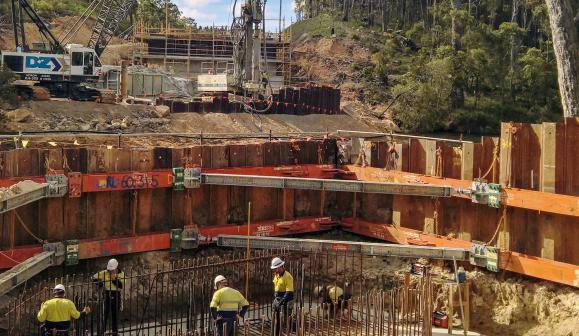Empowering Legislation
Main Roads Act
The Main Roads Act 1930, amended in 1996, establishes the Commissioner of Main Roads as a corporate body and sets out the powers and duties of the office.
Other Empowering Legislation
- The Land Administration Act 1997 provides powers for the resumption of, and entry on to land
- Section 131 (Liability for damage to road infrastructure) of the Road Traffic (Administration) Act 2008
- Regulation 297 of the Road Traffic Code 2000 provides the Commissioner with the power to erect road signs and traffic signals, and install road marking
- Section 40 of the Road Traffic (Vehicles) Act 2012 provides the Commissioner with the authority to give an access approval for a complying restricted access vehicle to be on a road.
- Section 33 of the Road Traffic (Vehicles) Act 2012 provides the Commissioner with the authority to modify a mass or dimension requirement, as provided in the Regulations.
We have processes and controls in place to ensure that we comply with other State and Commonwealth legislation and regulations which impact on our activities.
Our Commitment
In reviewing and considering our own corporate governance practices we consider the Public Sector Commission Guidelines as well as the application of ASX Corporate Governance Council principles within our own operating context. The following table provides a summary of our commitment against each of these principles which is further enhanced throughout the report.
| 1. Government and public sector relationship – The organisation’s relationship with the government is clear |
|
We have structures in place to ensure clear lines of communication with the Minister for Transport, our Portfolio partners and other government agencies |
| 2. Management and oversight – The organisation’s management and oversight is accountable and has clearly defined responsibilities |
1. Lay solid foundations for management and oversight – A listed entity should establish and disclose the respective roles and responsibilities of its board and management and how their performance is monitored and evaluated. |
Keeping WA Moving clearly outlines our Aspiration, Strategic Areas of Focus, Guiding Principles and Values |
| 3. Organisational structure – The organisation’s structure serves its operations |
2. Structure the board to add value – A listed entity should have a board of an appropriate size, composition, skills and commitment to enable it to discharge its duties effectively |
Corporate Executive is our lead governance body, it is made up of the leader from each Directorate and is supported by a number of sub committees. Details of their roles and achievements are included in this report |
| 4. Operations – The organisation plans its operations to achieve its goals |
|
Our Business Planning and reporting process ensures that our activities are aligned to our strategic plan and achieving the outcomes for each of our services |
| 5. Ethics and integrity – Ethics and integrity are embedded in the organisation’s values and operations |
3. Act ethically and responsibly – A listed entity should act ethically and responsibly |
Our Code of Conduct and Integrity Framework ensure our commitment to professional behaviours that are consistent with our values and guiding principles |
| 6: People – The organisation’s leadership in people management contributes to individual and organisational achievements |
|
Workforce planning across the Portfolio is a high priority and we invest in leaders who will genuinely challenge the status quo |
| 7. Finance – The organisation safeguards financial integrity and accountability |
4. Safeguard integrity in corporate reporting – A listed entity should have formal and rigorous processes that independently verify and safeguard the integrity of its corporate reporting |
Financial integrity is achieved through our Financial Management Manual, Audit and internal processes. The Budget Committee reviews and manages our financial performance on a monthly basis |
| 8. Communication – The organisation communicates with all parties in a way that is accessible, open and responsive |
5. Make timely and balanced disclosure – A listed entity should make timely and balanced disclosure of all matters concerning it that a reasonable person would expect to have a material effect on the price or value of its securities |
We work with the community and our customers to provide consistent communications and services of value by understanding their needs |
| 9. Risk management – The organisation identifies and manages its risks |
7. Recognise and manage risk – A listed entity should establish a sound risk management framework and periodically review the effectiveness of that framework |
Our Risk Management process is a part of our integrated annual business planning process. We work closely with our Portfolio colleagues to ensure consistency and enable tracking of high priority risks |




